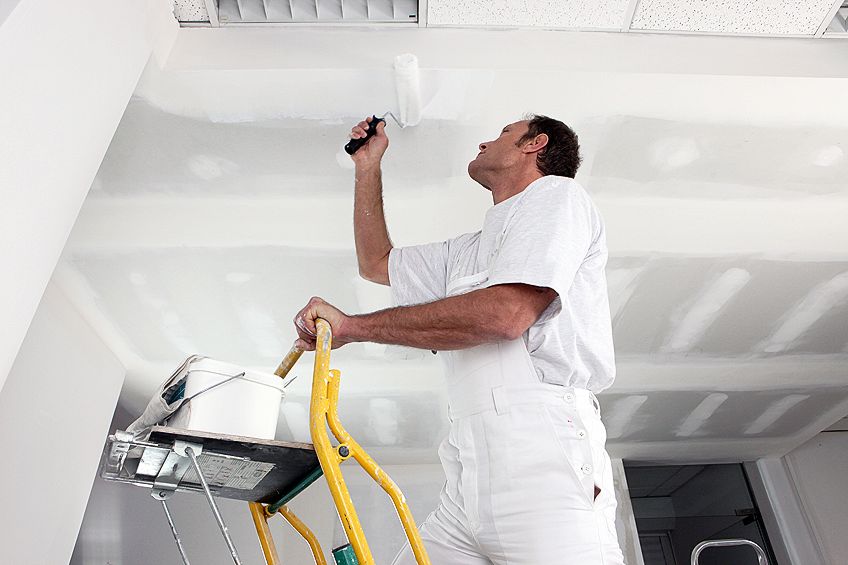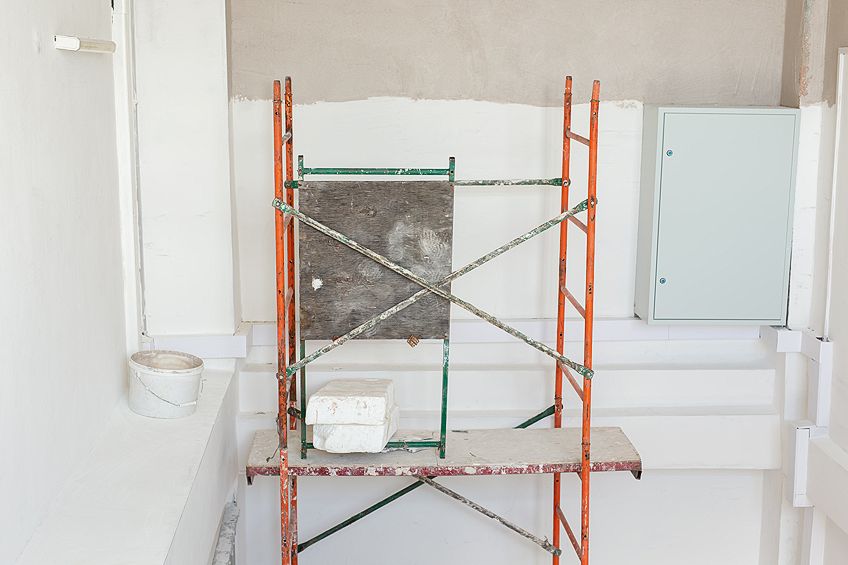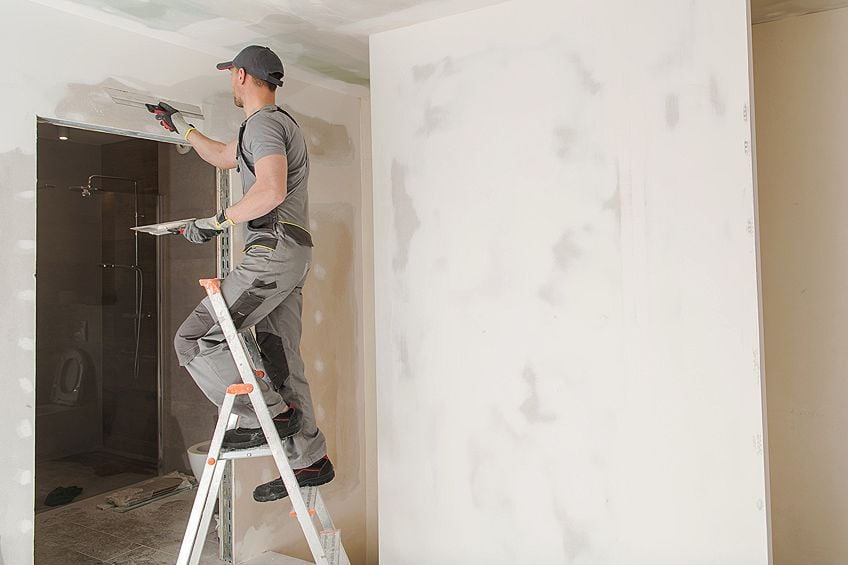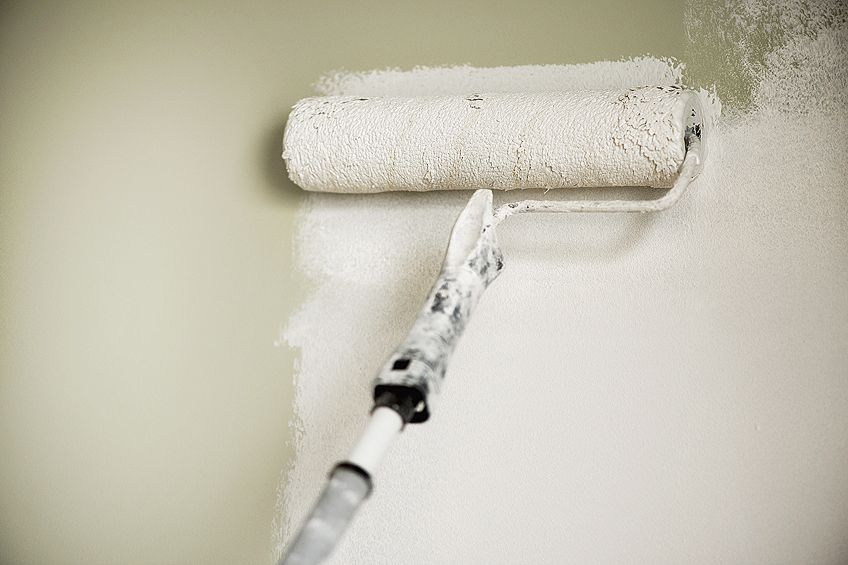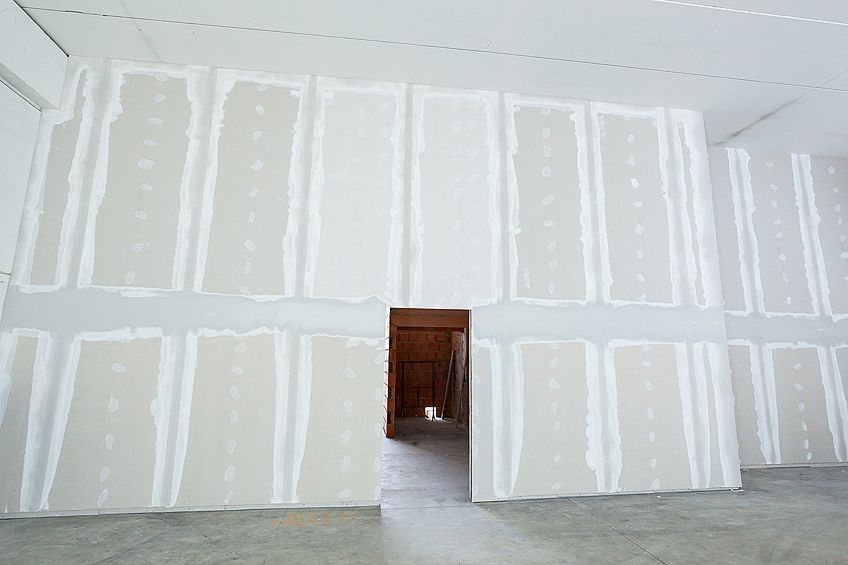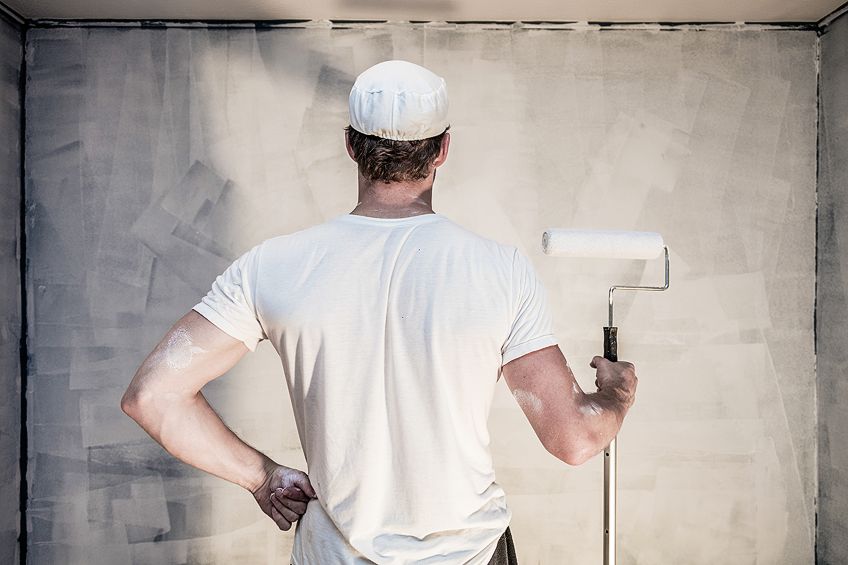How to Prime Drywall – Full Guide with Tutorial
This post may contain affiliate links. We may earn a small commission from purchases made through them, at no additional cost to you. You help to support resin-expert.com
During renovations or construction, drywall is often used to build walls and ceilings. Once the drywall has been properly installed, which includes taping and mudding, you need to apply a few coats of paint to match your décor. However, you will need to apply a primer over the drywall as it will soak up the paint without it. So, we will be discussing topics like what are drywall primers and taking a closer look at how to prime drywall.
Table of Contents
How to to Prime Drywall
When it comes to applying a primer for new drywall, you do not have to go for the most costly option. New walls should not have any stains or odors and should not have any holes or cracks in them either. On the other hand, if you are renovating and the walls have stains or are damaged, you will need to apply a drywall primer that has, for example, a stain-blocking feature.
Either way, there are a few general steps to follow when painting your drywall surface.
First, preparation before painting begins with an inspection of the drywall. Go over the drywall surface carefully and take note of any holes or cracks. These will need to be filled with drywall mud and the wall will then need to be sanded with a pole sander to get an even and smooth surface.
Be sure to clean most of the dust away after this has been done. First, vacuum the dust and then gently wipe the wall with a clean, dry cloth. Instead of a cloth, you can also consider using a product such as the Swiffer Sweeper instead. This sweeper can then be used for other purposes around the house. Do not worry if you do not get all the dust.
Next, you will need to know how to prime drywall. Some may recommend simply using a flat paint as the primer, however, this is not the best option for longer-lasting and smooth finish results. Paint and primer in one product can also be used, but the wall should be new or in excellent condition. If in doubt, it is always best to use a good-quality drywall sealer and primer, as it is designed for this purpose.
Begin applying the primer until you have covered the whole wall. You can use a brush to paint the primer on, which can manage the precision work and corners. You can then switch to a paint roller to paint the larger areas.
You can also spray the primer on, but in the case of drywalls, it is recommended that you leave this method of application to the professionals.
The primer should take between 30 minutes and three hours to dry, but you should check the product label for this information as the type of primer and even humidity can affect the dry time. Once the first coat is dry, you can apply a second coat. Allow this to dry before painting your final topcoat.
Tips on How to Use Drywall Primers
So, you have completed taping and mudding as well as sanding your drywall surface. Next, to create a beautiful finish to your drywall surfaces, you will need to apply a drywall primer. Let us have a look at a few pointers concerning how to prime drywall.
- Preparation is important. Make sure that you deal with any holes or imperfections to get as smooth a surface as possible.
- Do not use a wet rag when removing dust from sanding, as this can affect the mud.
- It is best to use a lint-free paint roller and to use other good-quality tools.
- Try to paint the walls within 48 hours after priming the surface.
- You can sand the drywall with 220-grit paper using a sanding pole.
- Consider using a tinted primer, especially if you are painting over colors.
- Make sure that you work in good lighting so that you can check your work properly.
- Think about investing in a canvas drop cloth to cover floors and nearby furniture.
- You can use a few fans around the room to help with ventilation. You should also have as many windows open as possible.
What Is a Drywall Primer?
Primer for new drywall is an important step in creating an even surface for painting. Many consider the best drywall primer to be PVA (Polyvinyl Acetate) primer, which is the same ingredient as what you find in wood glue. This type of primer is perfect as a drywall sealer as it works on porous surfaces and helps to cover any seams or nail heads, making the surface more even and ready to be painted. The drywall primer is designed to adhere to the surface much better than paint.
If you are going to simply apply several layers of paint, thinking that would do the job, then think again. First, you will be using a lot of paint unnecessarily. Second, the topcoat of paint will not be even and your chosen sheen will look different over taped and non-taped areas. This will most likely happen with each paint coat you apply, and the result will not last long.
All new drywalls need a primer to prevent the paint from being absorbed. The primer therefore acts as a drywall sealer, which helps to prevent the growth of mold in rooms like the bathroom where there is a lot of moisture.
Types of Drywall Primer
Applying drywall primer is a necessary, quick, affordable, and effective way to prepare a drywall surface. Additionally, there are a few easy ways to prepare the drywall. As mentioned, one of the popular choices is a PVA drywall primer, as it is low-priced and made especially to act as a drywall sealer.
You can also get a primer-and-paint combination, which contains thickening agents. Also known as self-priming paints, these products contain PVA and are thicker than your normal paint, so you do not have to apply numerous coats. You should be able to get an even surface in about two coats. Some other types of drywall primer include the following:
- Primer-Sealer: This option is specifically formulated to seal and prime drywalls.
- High-Build Primer: This primer provides good coverage over the drywall and will fill up any small cracks. A thick coat should make a good undercoat and will provide a level finish.
- Tinted Primer: You can add paint to a high-build primer to create your own tinted primer. The coat will not be the same color as your topcoat, but close enough that you will only need one coat of paint for an even finish.
- Bonding Primer: This primer bonds extremely well to porous surfaces as well as smooth surfaces. The primer provides a thick coat with a strong bond.
- Acrylic Primer: A more expensive option, this primer will create a smooth, even coat that will seal and cover up any cracks.
- BIN Primer: This is a shellac-based primer that dries quickly and is an effective stain killer and sealer. The surface must be dry before priming.
- Alkyd Primer: This is an oil-based primer that dries quickly and is best to use for water stains.
- Skim Coat: A joint drywall compound that you put onto the surface using a drywall knife, this primer will create a flat and smooth surface that is ready for painting.
The primer-sealer option is the best choice as a primer for new drywall. This will not only seal the surface, but will also cover any variations or imperfections, providing an even surface for the paint to adhere to.
Pros and Cons of Drywall Primers
We are going to focus on the drywall primer and sealer, which are the most commonly used. You have two options to choose from, being either an oil-based or water-based product. The drywall primer-sealers can also be tinted to a color that closely matches the paint you are going to use. Some paint stores may even do the tinting for you at an additional cost. What follows are a few pros and cons for drywall primers.
PROS
- Easily sanded
- Provides a smooth and even surface for effortless paint application
- Fewer coats required, thus using less paint
- Aids in creating a uniform base color onto which the topcoat of paint can be applied
- Water-based primers have fewer volatile organic compounds (VOCs) and are easier to clean up
- Some primers can help to prevent or block stains and resist things like mildew
CONS
- Oil-based primers have high VOC levels and tend to have a strong odor
Table of Drywall Primers
Below is a short overview of the types of drywall primer and the main purpose of each. If you choose not to apply a drywall primer, not only will the topcoat of paint not adhere properly, but any paint that is applied will begin to peel. It is also likely that you will have an uneven finish at the end, and it can be difficult to clean the wall a few months after painting as well. Thus, when all is said and done, it is always better to prepare and prime your drywall surface properly in order to achieve the best outcome.
| Type of Primer | Primer Purpose |
| Drywall Primer/Sealer | Specifically formulated for drywall, available as both water- and oil-based options |
| High-Build Primer | Provides good coverage |
| Tinted Primer | Adds a base color similar to the color of your topcoat of paint, resulting in a better finish |
| Bonding Primer | Provides a strong bond to difficult surfaces |
| BIN Primer | A shellac-based, fast-drying primer. Good sealer and stain killer |
| Skim Coat | Drywall joint compound for an even, smooth finish |
Choosing a Drywall Primer
Purchasing a drywall primer can be an easy experience if you know what you are looking for. So, what should you look out for when visiting your local hardware store? With all they have to offer you, you may not be sure of where to look and what to ask, in which case, the following should help you in choosing the best drywall primer.
Understanding the Purpose
You have to know what you want the product to do in order to choose the correct one. This should also work for all your other purchasing decisions. The question you need to ask is, what purpose does the product serve, and do you need it? Choosing a good-quality specialized primer for drywalls might be the right choice for you.
Moisture and Stain Resistance
Some primers offer resistance to stains and moisture – you do not want all your work ruined because you did not consider these features. Moisture resistance is needed especially in cases where there is a lot of moisture, such as in the bathroom and kitchen.
Scent
Water-based primers have less of an odor than your oil-based variety. However, always read the labels, as you can also get oil-based primer-sealers that are odorless and can be used both indoors and outdoors.
The Condition of the Wall
When a wall has lots of holes, is extremely uneven, or has nails sticking out, you should consider a high-build drywall primer. This type of primer is much thicker and covers most flaws, providing a more even surface for the application of paint. However, if your drywall is perfectly smooth, you might be able to get away with a standard primer product. Either way, a good-quality drywall primer is always best.
Coverage
You should consider the size of the area you want to cover. This will help you to work out how much primer is needed. The best thing to do to make sure that you have enough is to always purchase more than you think you will need. You should also look at the size of the product you are purchasing, as primers come in different sizes, from gallon- to quart-sized containers.
Primer Cost
You might be thinking of getting a cheap primer, as you are on a budget. Unfortunately, these products could be unreliable and of poor quality. Rather choose a more well-known brand that has positive reviews. There are affordable options out there, and these can save you time and money in the long run.
All-Purpose Primer vs. Specialized Primer
Some primers are designed to work on most surfaces and others can only be used on specific surfaces. Consider the all-purpose option, as you will then be able to use this product for other projects, where it will not go to waste if any is left over.
Frequently Asked Questions
What Is Drywall?
Drywall is used in the construction of walls as well as ceilings and is made from gypsum plaster along with other additives like mica, clay, paper, and cellulose. It is quick and easy to install and can be painted to match your décor. Drywall is also durable and can be repaired if necessary.
Does Drywall Primer Dry Quickly?
Drywall primer usually dries within 30 minutes, but it could also take anywhere from a couple of hours to as much as 24 hours. This all depends on the surrounding temperature, humidity, and what primer you are using. So, always read the product information to get accurate instructions.
Can You Apply Drywall Primers to Wood?
No, this is not recommended. Wood and drywall are very different from each other, and you will need a different type of primer for each.
Can You Paint Without Using a Primer for New Drywall?
This is not recommended, as the paint needs a better surface to adhere to. The drywall surface is porous, and the paint will be absorbed directly into it without a primer. A primer is also necessary to prevent the paint from peeling off and cracking once dry. Using a primer will also cover any unevenness and joint compounds you have used to provide a smooth surface for painting.
Is There a Difference Between Primer and Drywall Primer?
The best drywall primer is specially designed to act as a drywall sealer and primer by sealing the porous surface and providing a surface for the paint to adhere to. A normal primer only provides a surface onto which paint can adhere to.


